Headless Commerce vs. Traditional E-commerce: Which is Better?
In the rapidly evolving world of e-commerce, businesses must continually adapt to stay competitive. One of the most significant decisions e-commerce businesses face today is choosing between traditional and headless commerce architectures. Each approach offers distinct advantages and challenges, and the right choice depends on your business needs and goals. In this blog, we will compare headless and traditional e-commerce to help you determine which approach suits your business best. Additionally, we will highlight how CloudActive Labs can assist you with our Hire Developer Services to implement the optimal solution for your business.
Understanding Traditional E-commerce
Traditional e-commerce platforms, such as Magento, Shopify, and WooCommerce, offer an all-in-one solution where the front-end (the user interface) and the back-end (the server-side processes) are tightly integrated. These platforms provide a complete package with built-in features for managing products, customers, orders, and content.
![[object Object]](https://clipl-web1.sgp1.cdn.digitaloceanspaces.com/images/clzia5mo8008w32qgd3m43vhv.png)
- Ease of Use: Traditional platforms are user-friendly and come with a range of built-in templates and themes, making it easy to set up and manage an online store without extensive technical knowledge.
- Unified System: With a single platform handling both front-end and back-end operations, businesses can manage their e-commerce activities more efficiently.
- Cost-Effective: Traditional platforms often have lower upfront costs and require less custom development work, making them a cost-effective solution for small to medium-sized businesses.
- Comprehensive Features: These platforms come with a wide array of built-in features and plugins that cater to various e-commerce needs, from payment processing to inventory management.
![[object Object]](https://clipl-web1.sgp1.cdn.digitaloceanspaces.com/images/clzi5t35z006l32qgev2w4su6.png)
- Limited Flexibility: The tightly coupled architecture can limit customization and flexibility, making it challenging to create unique user experiences or integrate with new technologies.
- Scalability Issues: As your business grows, traditional platforms may struggle to handle increased traffic and complex functionality, leading to performance issues.
- Slower Innovation: Adapting to new market trends and technologies can be slower due to the monolithic structure of traditional platforms.
Understanding Headless Commerce
Headless commerce separates the front-end (the presentation layer) from the back-end (the commerce engine), allowing each to operate independently. This decoupling is achieved through APIs, which enable the front-end to communicate with the back-end seamlessly.
![[object Object]](https://clipl-web1.sgp1.cdn.digitaloceanspaces.com/images/clzia7rk6009132qgbvtg3ymc.png)
- Flexibility and Customization: Headless architecture allows for complete customization of the front-end, enabling businesses to create unique, tailored user experiences across multiple channels.
- Scalability: With independent front-end and back-end systems, businesses can scale more efficiently, handling increased traffic and expanding functionalities without performance issues.
- Faster Innovation: Headless commerce supports rapid integration of new technologies and trends, such as AI, AR, and VR, keeping your business at the forefront of e-commerce innovation.
- Improved Performance: By decoupling the front-end from the back-end, headless commerce can reduce server load and improve site performance, resulting in faster load times and a better user experience.
![[object Object]](https://clipl-web1.sgp1.cdn.digitaloceanspaces.com/images/clw7br1ug003e4crz8w6ygj2t.png)
Complexity: Implementing and managing a headless architecture requires specialized technical expertise, making it more complex than traditional e-commerce setups.
Higher Initial Costs: The need for custom development and integration work can lead to higher upfront costs compared to traditional platforms.
Resource Intensive: Ongoing maintenance and updates for both the front-end and back-end systems can require more resources and effort.
![[object Object]](https://clipl-web1.sgp1.cdn.digitaloceanspaces.com/images/clw7brmcu003i4crzaqo7ekp4.png)
Transitioning to or implementing an e-commerce platform, whether traditional or headless, requires specialized skills and expertise. At CloudActive Labs, we offer Hire Developer Services to help you successfully navigate this process. Our experienced developers can:
- Accelerate Development: With extensive experience in both traditional and headless commerce, our developers ensure a faster and more efficient implementation process.
- Customize Solutions: We tailor the e-commerce platform to meet your specific business needs and goals, whether you choose a traditional or headless approach.
- Ensure Quality and Performance: Our expertise ensures that your e-commerce platform is optimized for performance, scalability, and security.
Conclusion
Both traditional and headless e-commerce architectures offer unique advantages and challenges. By carefully assessing your business needs and resources, you can choose the approach that best suits your goals.
At CloudActive Labs, we are dedicated to helping you succeed in the ever-evolving e-commerce landscape. Our Hire Developer Services provide the expertise needed to implement and maintain the optimal e-commerce solution for your business.
Contact us today at [email protected] or +91 987 133 9998 to learn more about how we can help you achieve e-commerce excellence. Visit our website www.cloudactivelabs.com to explore our services and discover how we can support your business growth through innovative e-commerce solutions.
























